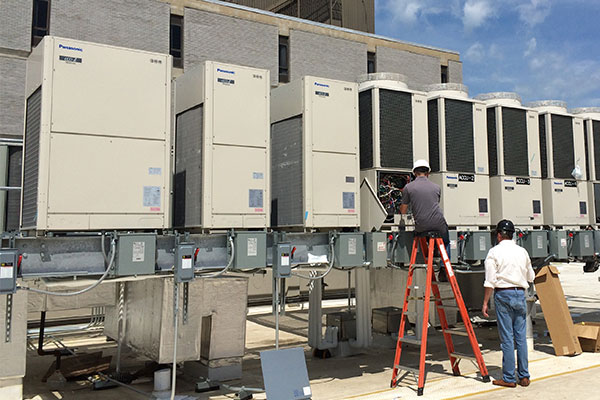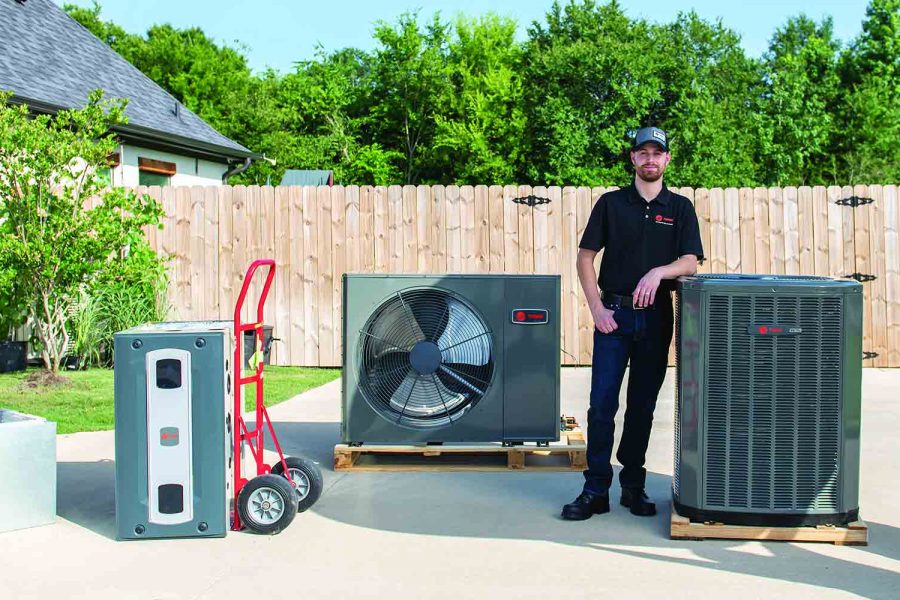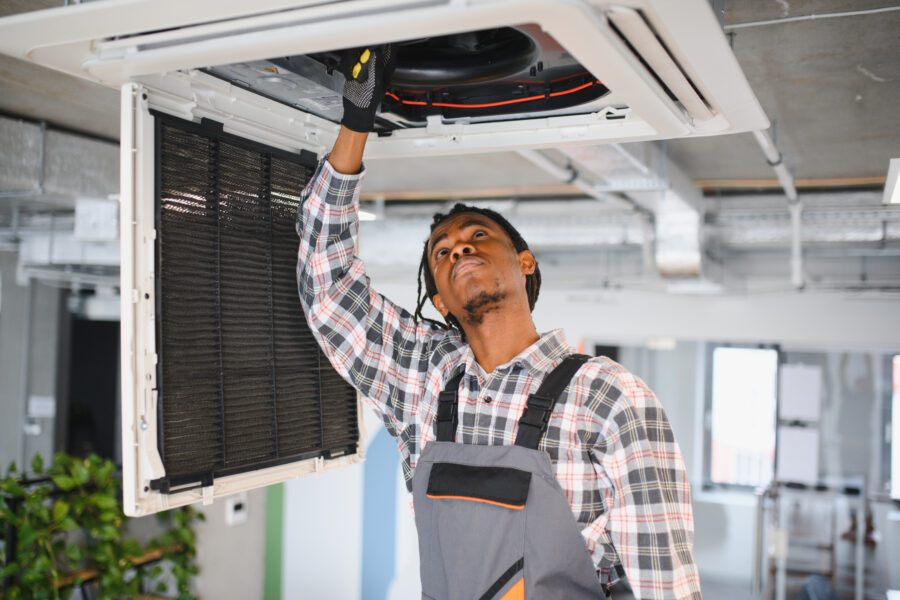
When it comes to heating and cooling commercial buildings, Variable Refrigerant Flow (VRF) systems are becoming the go-to choice for many business owners. They’re already common in offices, retail spaces, hotels, and other multi-zone buildings. While you don’t need to know every engineering detail about how they work, it’s important to understand how VRF technology can impact your bottom line, comfort, building operations, and long-term planning.
Below, we break down what makes VRF systems unique, what you should consider before making the switch, and why choosing the right HVAC company makes all the difference.
What Makes a VRF System Different from a Traditional HVAC Unit
Traditional HVAC systems work in a relatively straightforward way; either the entire system is on, delivering conditioned air through ductwork, or it’s off. This means heating or cooling is often applied uniformly across an entire building, regardless of individual room needs.
A VRF system works differently. Instead of sending the same amount of conditioned air everywhere, VRF technology uses refrigerant as the heating and cooling medium and adjusts the flow to different areas (or zones) of your building based on real-time demand. The system can even heat some areas while cooling others at the same time.
The result? Greater efficiency, more precise comfort control, and the ability to adapt to your building’s changing needs throughout the day.
What Business Owners Need to Know About VRF Systems
Before investing in any new HVAC technology, it’s important to look beyond the sales pitch and understand how the system will impact your day-to-day operations, expenses, and long-term building performance. VRF systems are highly adaptable and energy-efficient, but like any major upgrade, they come with considerations that can affect everything from installation timelines to maintenance budgets. Below are the key factors every business owner should evaluate before moving forward with a VRF installation or retrofit.
Benefits
- Energy Efficiency – VRF systems often use less energy because they only deliver the exact amount of heating or cooling each zone needs.
- Zoned Comfort – Different parts of the building can have customized temperature control, allowing for rooms to have individual temperature settings.
- Quiet Operation – Both indoor and outdoor units are typically quieter than traditional systems, which can improve the environment in offices or customer-facing spaces.
- Space Savings – Requires less ductwork and smaller mechanical rooms, freeing up valuable square footage.
Potential Drawbacks
- Higher Upfront Cost – Installation can be more expensive than traditional systems.
- Specialized Service Needs – Requires technicians trained specifically in VRF technology.
- Climate Considerations – In extremely cold climates, some VRF systems may need supplemental heating for maximum performance.
ROI / Long-Term Value
- Energy savings can lead to a return on investment within 3–7 years, depending on your building’s usage.
- A longer lifespan—often up to 20 years with proper maintenance—can reduce replacement costs over time.
- Improved comfort and operational control can enhance productivity, tenant satisfaction, and customer experience.
Maintenance Requirements
- Professional check-ups twice a year are recommended to keep the system at peak performance.
- Routine filter cleaning or replacement.
- Regular refrigerant leak checks to maintain efficiency and protect the system’s components.
In short, VRF systems can be a smart, long-term investment for many commercial properties, but only if they’re properly designed, installed, and maintained. Discuss details with an experienced HVAC company to ensure you are making the right choice for your facility.
Why It’s Important to Work with an HVAC Company That Understands What They’re Doing
Installing and maintaining a VRF system isn’t like working with a standard HVAC unit, as it requires specialized knowledge, proper design, and precise installation to get the most out of it. Choosing an HVAC company without the right expertise can lead to costly mistakes, reduced efficiency, and premature equipment issues.
At Climate Care HVAC Services, VRF systems are one of the most common applications we handle. We’ve designed, installed, and serviced VRF systems for commercial properties across Maryland and Delaware, helping business owners achieve better comfort, lower energy costs, and more reliable performance.
Whether you’re looking to install a new VRF system or need repair services on your existing unit, our team has the training and hands-on experience to ensure your system runs smoothly for years to come.


